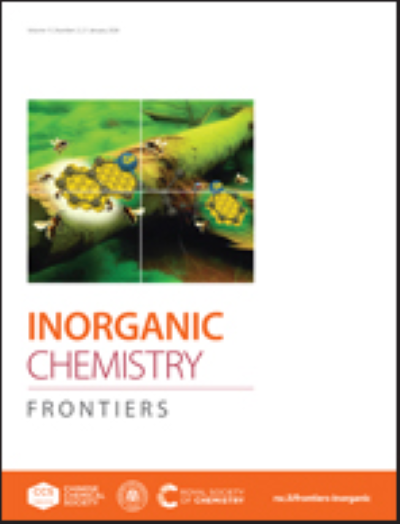Boosting electrochemical urea synthesis via nitrous oxide and carbon oxide coupling over homonuclear dual-atom catalysts:a density functional study: A computational study
IF 6.4
1区 化学
Q1 CHEMISTRY, INORGANIC & NUCLEAR
引用次数: 0
Abstract
Developing efficient electrocatalysts for urea synthesis is attracting increasing attention but remains challenging due to the lack of simplified mechanisms and suitable feedstock. In this work, we propose a novel mechanism for urea synthesis on dual transition metal atom-anchored graphitic carbon nitride (TM2@g-C₂N) through the co-reduction of CO and N2O using density functional theory (DFT) calculations. By employing a three-step screening strategy, we systematically investigated homonuclear dual-atom pairs embedded in g-C₂N for their catalytic activity, selectivity, and stability. Our results demonstrate that dual-atom pairs can be stably embedded into the hollow regions of g-C2N via nitrogen coordination, exhibiting superior electrochemical stability. In addition, dual-metal atoms significantly enhance the electrical conductivity of g-C2N, facilitating charge transfer. Notably, Fe2 and Co2@g-C2N emerge as promising candidates for electrocatalytic urea synthesis via CO and N2O coupling, with limiting potentials (UL) of −0.27 V and −0.35 V, respectively, following alternative mechanism. Meanwhile, Nb2@g-C2N is identified as an excellent catalyst for N2O reduction to NH3, achieving UL of −0.34 V within mixed mechanism. We further reveal that stable *NCON adsorption promotes subsequent hydrogenation steps, lowering the limiting potential for urea formation on Fe2@g-C2N. The adsorption of N2O and formation of *NCON on TM2@g-C2N are identified as critical steps, where the relatively strong interactions between active sites and intermediates correlate with high catalytic activity. This work expands the potential of dual-atom catalysts in enabling efficient urea production via N2O and CO co-reduction.通过氧化亚氮和氧化碳偶联在同核双原子催化剂上促进电化学尿素合成:密度功能研究:计算研究
开发高效的尿素合成电催化剂日益受到人们的关注,但由于缺乏简化的机理和合适的原料,仍然具有挑战性。在这项工作中,我们提出了一种新的机制,通过密度泛函理论(DFT)计算,通过CO和N2O的共还原,在双过渡金属原子锚定石墨氮化碳(TM2@g-C₂N)上合成尿素。通过采用三步筛选策略,我们系统地研究了嵌入g-C₂N的同核双原子对的催化活性、选择性和稳定性。结果表明,双原子对可以通过氮配位稳定嵌入到g-C2N的空心区域,表现出优异的电化学稳定性。此外,双金属原子显著提高了g-C2N的导电性,促进了电荷的转移。值得注意的是,Fe2和Co2@g-C2N是通过CO和N2O偶联电催化合成尿素的有希望的候选物,它们的极限电位(UL)分别为- 0.27 V和- 0.35 V。同时,Nb2@g-C2N是将N2O还原为NH3的优良催化剂,在混合机制下UL达到−0.34 V。我们进一步发现,稳定的*NCON吸附促进了后续的加氢步骤,降低了Fe2@g-C2N上尿素生成的极限电位。在TM2@g-C2N上N2O的吸附和*NCON的形成被认为是关键步骤,其中活性位点和中间体之间相对强的相互作用与高催化活性相关。这项工作扩大了双原子催化剂通过N2O和CO共还原实现高效尿素生产的潜力。
本文章由计算机程序翻译,如有差异,请以英文原文为准。
求助全文
约1分钟内获得全文
求助全文
来源期刊

Inorganic Chemistry Frontiers
CHEMISTRY, INORGANIC & NUCLEAR-
CiteScore
10.40
自引率
7.10%
发文量
587
审稿时长
1.2 months
期刊介绍:
The international, high quality journal for interdisciplinary research between inorganic chemistry and related subjects
 求助内容:
求助内容: 应助结果提醒方式:
应助结果提醒方式:


